Enhancing Water Management in Shale Gas Extraction through Rectangular Pulse Hydraulic Fracturing
Abstract
1. Introduction
2. Literature Review
3. Methodology
3.1. Pore Fluid Flow
3.2. Fracturing Fluid Flow
- Radial Fracture Model (2D Axisymmetric): The formation is discretized using a combination model that employs both linearly coupled pore fluid diffusion/stress elements (CAX4P) and cohesive elements. Cohesive elements are incorporated along the expected fracture propagation path in the horizontal mid-plane of the domain. The cohesive and continuum elements have shared nodes.
- Planar Fracture Model (2D Plane Strain): Linear coupled pore fluid diffusion/stress elements (CPE4P) are used to discretize the formation, while the fracture plane is represented by either plane strain coupled pressure/deformation cohesive elements (COH2D4P) or the enriched version of the coupled pore fluid diffusion/stress continuum elements (XFEM).
4. Results and Discussion
5. Conclusions
Author Contributions
Funding
Institutional Review Board Statement
Informed Consent Statement
Data Availability Statement
Acknowledgments
Conflicts of Interest
References
- Haimson, B.C. Deep in-situ stress measurements by hydrofracturing. Tectonophysics 1975, 29, 41–47. [Google Scholar] [CrossRef]
- Mahrer, K.D. A review and perspective on far-field hydraulic fracture geometry studies. J. Pet. Sci. Eng. 1999, 24, 13–28. [Google Scholar] [CrossRef]
- Beugelsdijk, L.J.L.; De Pater, C.J.; Sato, K. Experimental hydraulic fracture propagation in a multi-fractured medium. In SPE Asia Pacific Conference on Integrated Modeling for Asset Management; OnePetro: Richardson, TX, USA, 2000. [Google Scholar]
- Chuprakov, D.A.; Akulich, A.V.; Siebrits, E.; Thiercelin, M. Hydraulic-fracture propagation in a naturally fractured reservoir. SPE Prod. Oper. 2011, 26, 88–97. [Google Scholar] [CrossRef]
- Huang, Z.; Li, Y.; Liu, Y. Hydraulic performance and wave loadings of perforated/slotted coastal structures: A review. Ocean. Eng. 2011, 38, 1031–1053. [Google Scholar] [CrossRef]
- Zhou, Z.; Abass, H.; Li, X.; Teklu, T. Experimental investigation of the effect of imbibition on shale permeability during hydraulic fracturing. J. Nat. Gas Sci. Eng. 2016, 29, 413–430. [Google Scholar] [CrossRef]
- Li, Q.; Lin, B.; Zhai, C. The effect of pulse frequency on the fracture extension during hydraulic fracturing. J. Nat. Gas Sci. Eng. 2014, 21, 296–303. [Google Scholar] [CrossRef]
- Lu, X.; Du, X.; Zeng, M.; Zhang, S.; Wang, Q. Shell-side thermal-hydraulic performances of multilayer spiral-wound heat exchangers under different wall thermal boundary conditions. Appl. Therm. Eng. 2014, 70, 1216–1227. [Google Scholar] [CrossRef]
- Boschee, P. Produced and flowback water recycling and reuse: Economics, limitations, and technology. Oil Gas Facil. 2014, 3, 16–21. [Google Scholar] [CrossRef]
- He, P.; Lu, Z.; Deng, Z.; Huang, Y.; Qin, D.; Ouyang, L.; Li, M. An advanced hydraulic fracturing technique: Pressure propagation and attenuation mechanism of step rectangular pulse hydraulic fracturing. Energy Sci. Eng. 2023, 11, 299–316. [Google Scholar] [CrossRef]
- Kim, J.; Lee, H.; Lee, M.; Han, H.; Kim, D.; Kim, H.S. Development of a Deep Learning-Based Prediction Model for Water Consumption at the Household Level. Water 2022, 14, 1512. [Google Scholar] [CrossRef]
- Sobhaniaragh, B.; Trevelyan, J.; Mansur, W.J.; Peters, F.C. Numerical simulation of MZF design with non-planar hydraulic fracturing from multi-lateral horizontal wells. J. Nat. Gas Sci. Eng. 2017, 46, 93–107. [Google Scholar] [CrossRef]
- Warner, N.R.; Darrah, T.H.; Jackson, R.B.; Millot, R.; Kloppmann, W.; Vengosh, A. New tracers identify hydraulic fracturing fluids and accidental releases from oil and gas operations. Environ. Sci. Technol. 2014, 48, 12552–12560. [Google Scholar] [CrossRef] [PubMed]
- Bondu, R.; Kloppmann, W.; Naumenko-Dèzes, M.O.; Humez, P.; Mayer, B. Potential impacts of shale gas development on inorganic groundwater chemistry: Implications for environmental baseline assessment in shallow aquifers. Environ. Sci. Technol. 2021, 55, 9657–9671. [Google Scholar] [CrossRef]
- Mohajan, H. Unconventional shale gas extraction: Present and future effects. Int. J. Hum. Dev. Sustain. 2012, 5, 9–23. [Google Scholar]
- Aminzadeh, F. (Ed.) Hydraulic Fracturing and Well Stimulation; Wiley: Hoboken, NJ, USA, 2019; pp. 1–313. [Google Scholar]
- Zhang, X.; Jeffrey, R.G. Reinitiation or termination of fluid-driven fractures at frictional bedding interfaces. J. Geophys. Res. Solid Earth 2008, 113, 5327. [Google Scholar] [CrossRef]
- Zeng, F.; Peng, F.; Zeng, B.; Guo, J.; Pati, S.; Zhang, S.; Chen, Z. Perforation orientation optimization to reduce the fracture initiation pressure of a deviated cased hole. J. Pet. Sci. Eng. 2019, 177, 829–840. [Google Scholar] [CrossRef]
- Ren, X.; Guan, Y.; Zhang, X.; Liu, X.; Liu, J.; Liu, K.; Luo, J.; Shi, G. Numerical investigation of poroelastic effects during hydraulic fracturing using XFEM combined with cohesive zone model. In E3S Web of Conferences; EDP Sciences: Les Ulis, France, 2023; Volume 375, p. 01011. [Google Scholar]
- Zheng, X.; Chen, M.; Hou, B.; Ye, Z.; Wang, W.; Yin, C.; Chen, X. Effect of proppant distribution pattern on fracture conductivity and permeability in channel fracturing. J. Pet. Sci. Eng. 2017, 149, 98–106. [Google Scholar] [CrossRef]
- He, P.; Pan, L.; Lu, Z.; Zhou, J.; Meng, C.; Yu, H. Experimental study to quantify fracture propagation in hydraulic fracturing treatment. ACS Omega 2022, 7, 27490–27502. [Google Scholar] [CrossRef] [PubMed]
- Kavya, M.; Mathew, A.; Shekar, P.R.; Sarwesh, P. Short-Term Water Demand Forecast Modeling Using Artificial Intelligence for Smart Water Management. Sustain. Cities Soc. 2023, 95, 104610. [Google Scholar] [CrossRef]
- Sarris, E.; Papanastasiou, P. The influence of pumping parameters in fluid-driven fractures in weak porous formations. Int. J. Numer. Anal. Methods Geomech. 2015, 39, 635–654. [Google Scholar] [CrossRef]
- Xie, Q.; Liu, X.; Fan, L.; Peng, S.; Zeng, Y. Evaluation of equivalent crack propagation length and fracture energy of two commonly used rock fracture toughness test configurations based on Bažant’s size effect law. Eng. Fract. Mech. 2023, 281, 109067. [Google Scholar] [CrossRef]
- Hurtado, A.; Eguilior, S.; Recreo, S. The Process of Risk Management for a Project to Extract Shale Gas. Informes Técnicos Ciemat 1330 Octubre, 2014. Available online: https://inis.iaea.org/search/search.aspx?orig_q=RN:46017600 (accessed on 15 March 2023).
- Evaluation of Safety Engineering System in Oil and Gas Construction Projects in UAE. Available online: https://www.researchgate.net/ (accessed on 15 March 2023).
- Searles, K.H.; Zielonka, M.G.; Garzon, J.L. Fully Coupled 3-D Hydraulic Fracture Models—Development and Validation. In Hydraulic Fracture Modeling; Gulf Professional Publishing: Houston, TX, USA, 2018; pp. 155–193. [Google Scholar]
- Taheri-Shakib, J.; Ghaderi, A.; Kanani, V.; Rajabi-Kochi, M.; Hosseini, S.A. Numerical analysis of production rate based on an interaction between induced and natural fractures in porous media. J. Pet. Sci. Eng. 2018, 165, 243–252. [Google Scholar] [CrossRef]
- Mohammadnejad, T.; Andrade, J.E. Numerical modeling of hydraulic fracture propagation, closure and reopening using XFEM with application to in-situ stress estimation. Int. J. Numer. Anal. Methods Geomech. 2016, 40, 2033–2060. [Google Scholar] [CrossRef]
- Li, M.; Lv, W.; Liu, J.; Sun, Z.; Zhou, F.; Wang, B. Effect of perforation friction on 3D In-stage multiple fracture propagation: A numerical study. Eng. Fract. Mech. 2022, 267, 108415. [Google Scholar] [CrossRef]
- Overview The Porous Bulk Moduli Internet Source. Available online: https://classes.engineering.wustl.edu/2009/spring/mase5513/abaqus/docs/v6.6/books/usb/pt05ch20s07abm55.html (accessed on 15 March 2023).
- Esfandiari, M.; Pak, A. XFEM modeling of the effect of in-situ stresses on hydraulic fracture characteristics and comparison with KGD and PKN models. J. Pet. Explor. Prod. Technol. 2023, 13, 185–201. [Google Scholar] [CrossRef]
- Algamili, A.S.; Khir, M.H.; Ahmed, A.Y.; Al-Mahdi, O.L.; Ba-Hashwan, S.S.; Alabsi, S.S. Modeling of the PolyMUMPs-Based MEMS Sensor for Application in Trace Gas Detection. In Proceedings of the 2021 International Conference on Intelligent Cybernetics Technology & Applications (ICICyTA), Virtual, 1–2 December 2021; IEEE: Manhattan, NY, USA, 2021; pp. 58–63. [Google Scholar]
- Lathrop, R.P.; Ourak, M.; Deprest, J.; Vander Poorten, E. Concentric Dual-Chamber Pneumatic Artificial Muscles: Miniature Actuators Designed for Use in Minimally Invasive Surgical Instruments. J. Med. Robot. Res. 2022, 7, 2241007. [Google Scholar] [CrossRef]
- Yan, Y.; Guan, Z.; Zhang, B.; Chen, W. Numerical investigation of debonding extent development of cementing interfaces during hydraulic fracturing through perforation cluster. J. Pet. Sci. Eng. 2021, 197, 107970. [Google Scholar] [CrossRef]
- Li, Y.; Hu, Z.; Qiu, Z.; Qiu, Y. A 3D peridynamic fluid–solid coupling damage model of hydraulic fracture propagation. Energy Sci. Eng. 2023, 11, 178–191. [Google Scholar] [CrossRef]
- He, J.; Zhang, Z.; Li, G.; Huo, J.; Li, S.; Li, X. Modeling study on supercritical CO2 fracturing applicability and capacity to stimulate reservoirs with different permeabilities. J. Pet. Sci. Eng. 2022, 213, 110427. [Google Scholar] [CrossRef]
- Li, H.; Huang, B.; Xu, H. The Optimal Sine Pulse Frequency of Pulse Hydraulic Fracturing for Reservoir Stimulation. Water 2022, 14, 3189. [Google Scholar] [CrossRef]
- Veiguela, M.; Hurtado, A.; Eguilior, S.; Recreo, F.; Roqueñi, N.; Loredo, J. A risk assessment tool applied to the study of shale gas resources. Sci. Total Environ. 2016, 571, 551–560. [Google Scholar] [CrossRef] [PubMed]
- Birdsell, D.T.; Rajaram, H.; Lackey, G. Imbibition of hydraulic fracturing fluids into partially saturated shale. Water Resour. Res. 2015, 51, 6787–6796. [Google Scholar] [CrossRef]
- Wei, C.; Zhang, B.; Li, S.; Fan, Z.; Li, C. Interaction between hydraulic fracture and pre-existing fracture under pulse hydraulic fracturing. SPE Prod. Oper. 2021, 36, 553–571. [Google Scholar] [CrossRef]


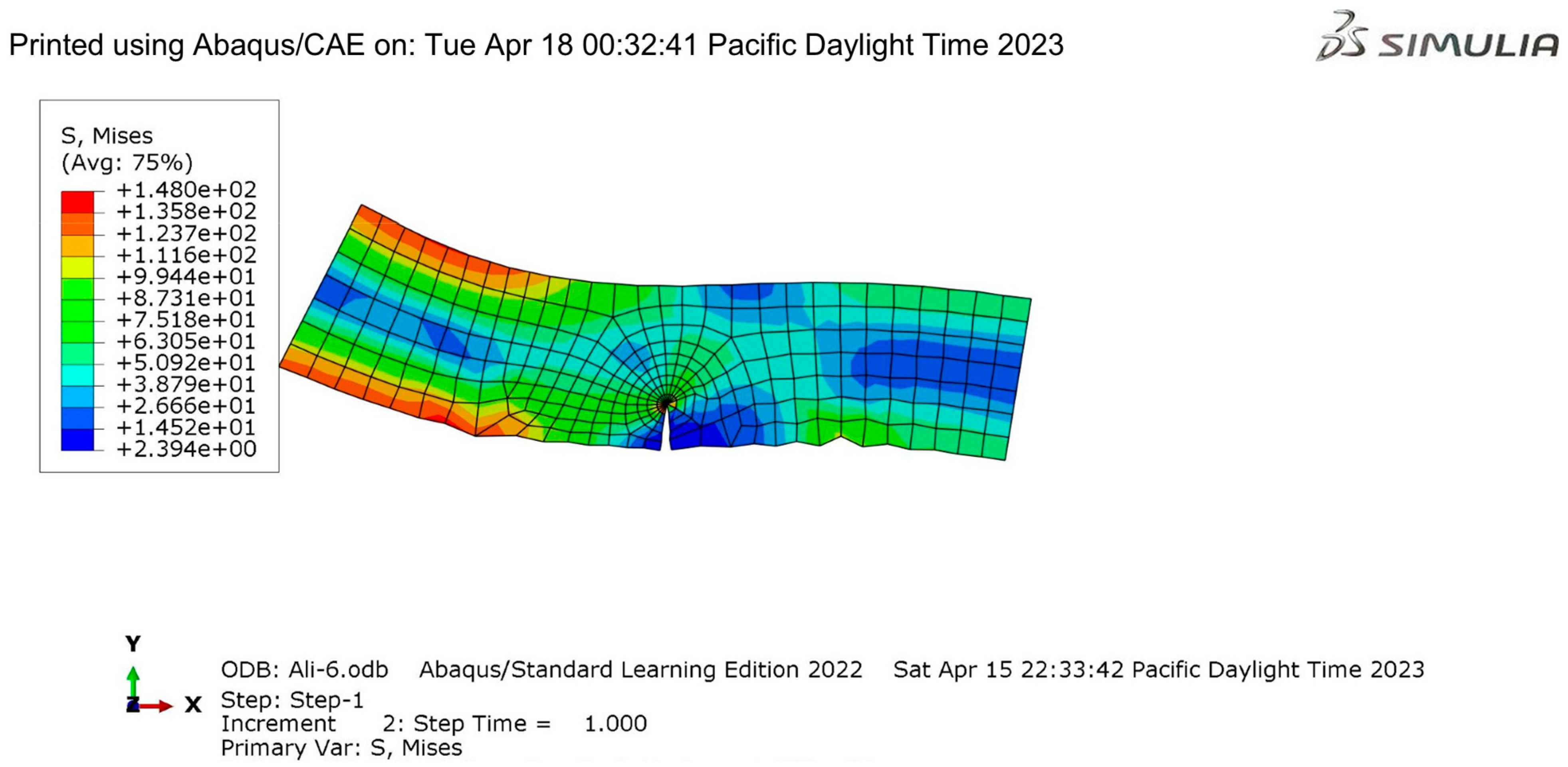

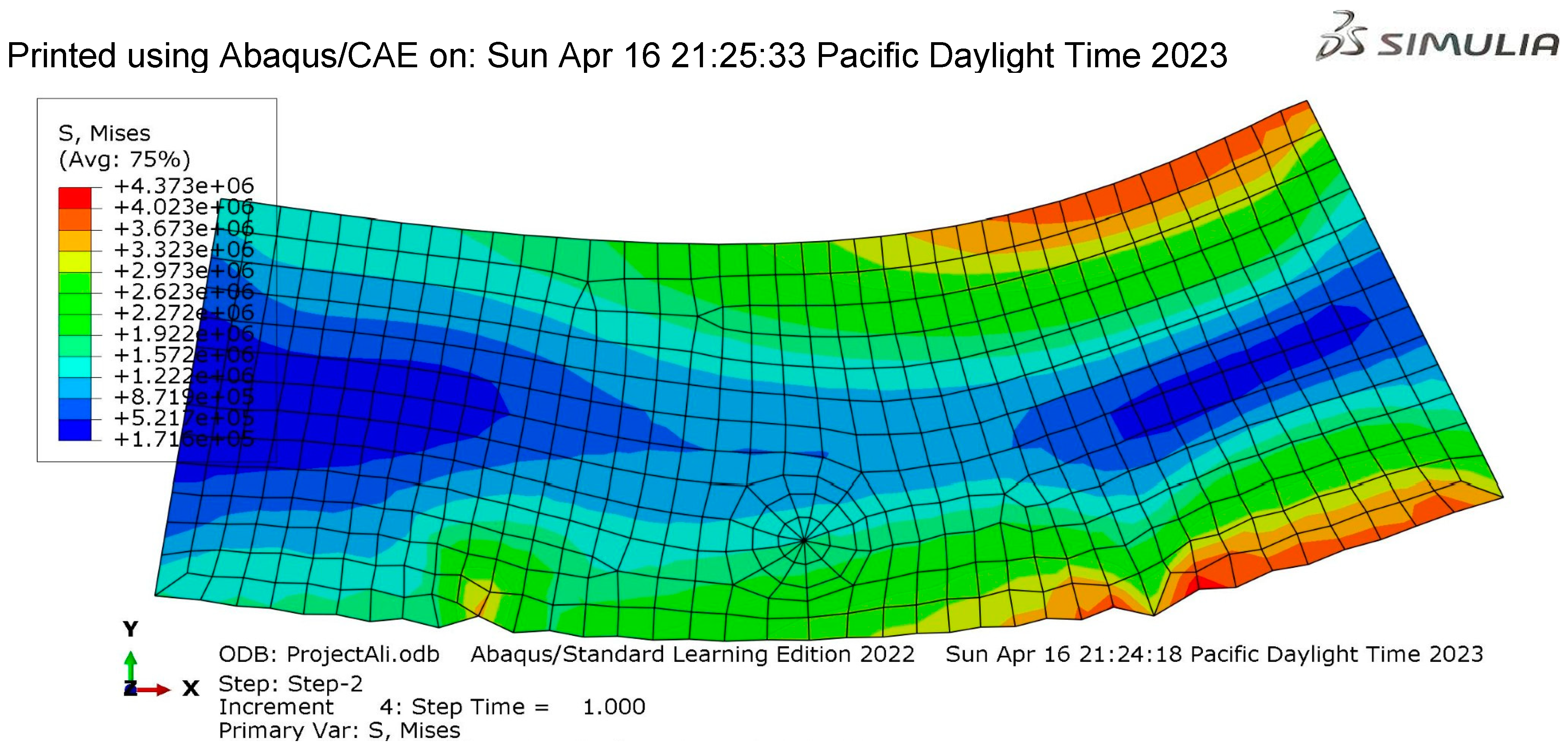
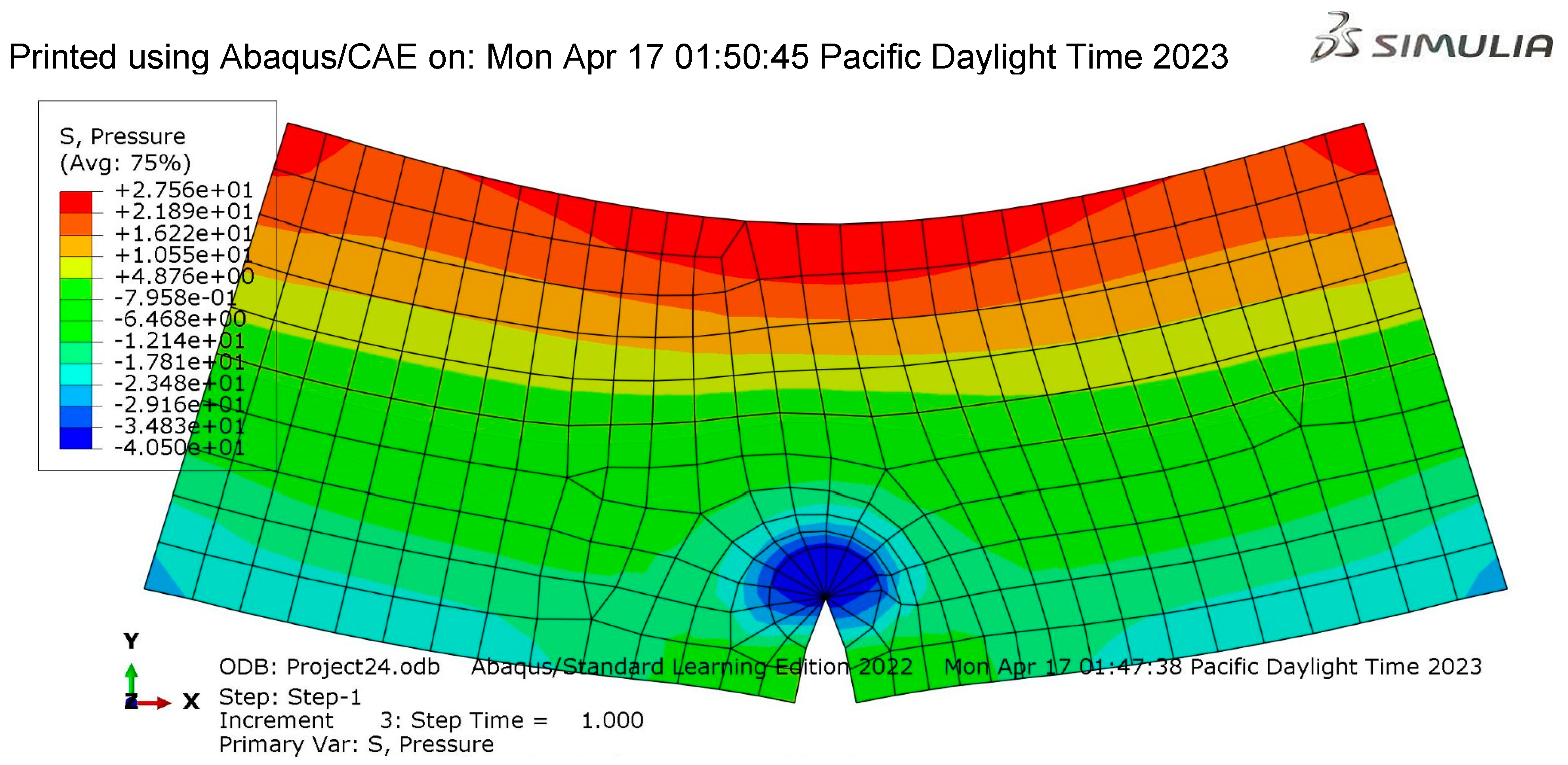



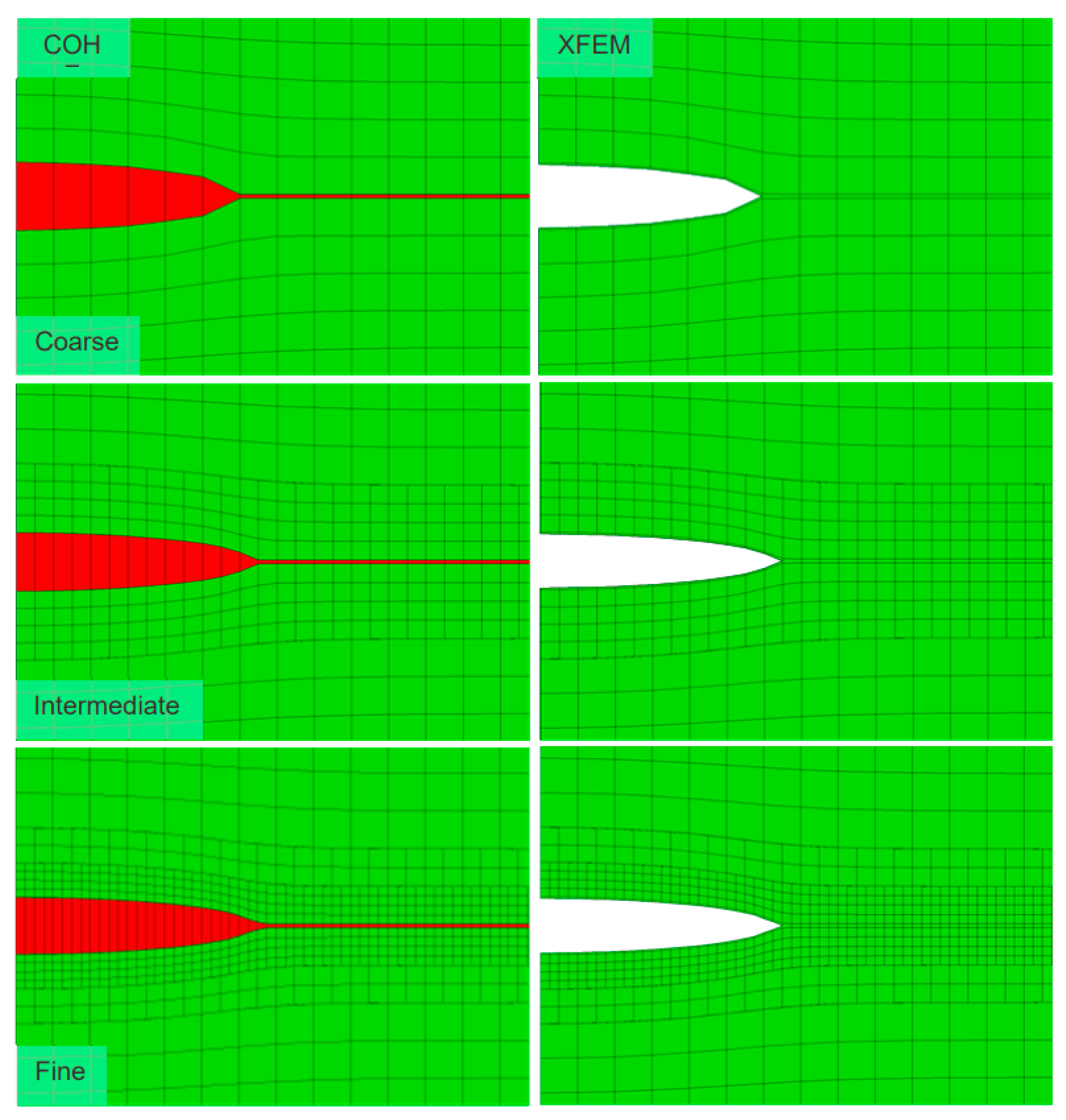

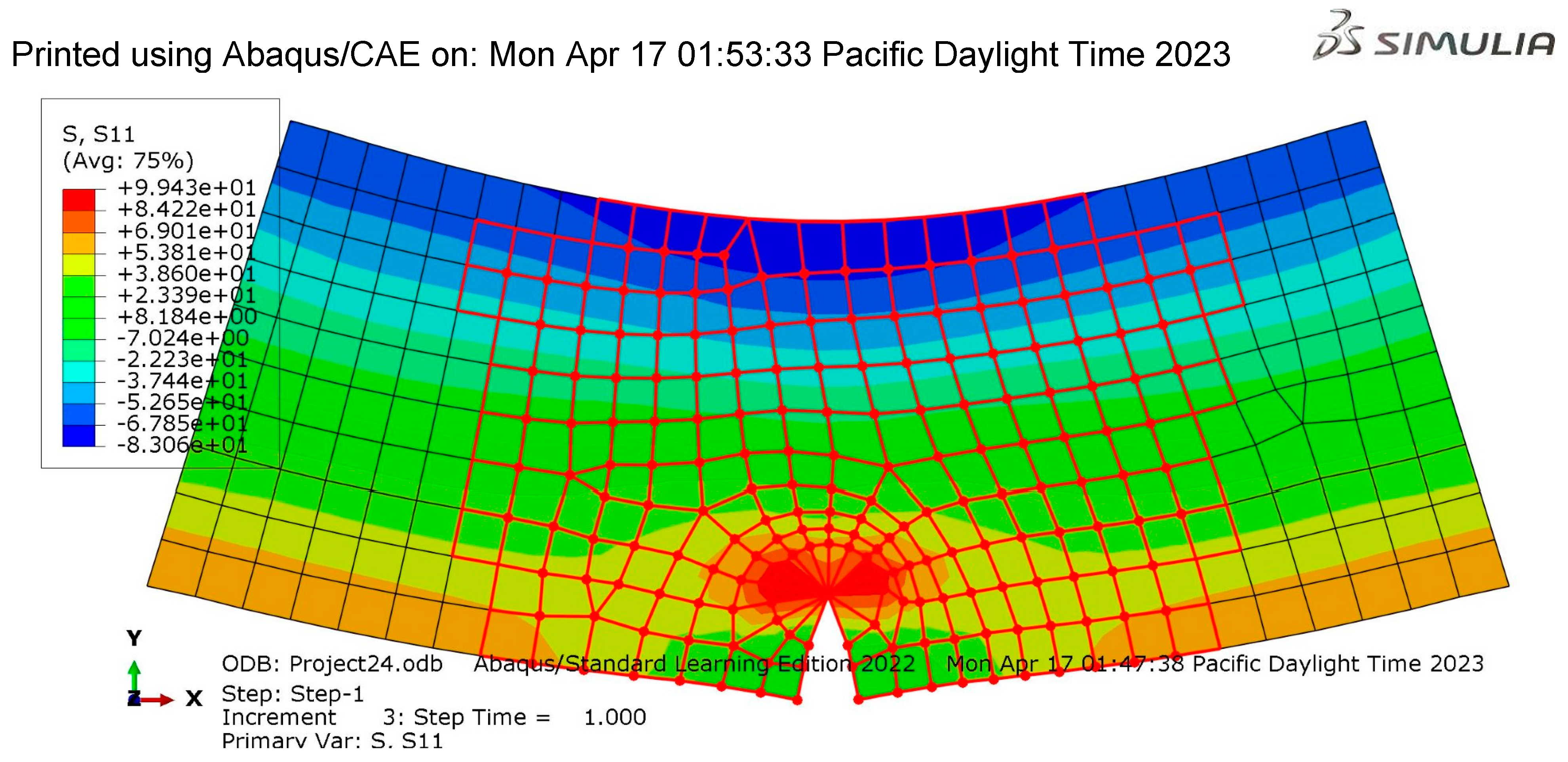
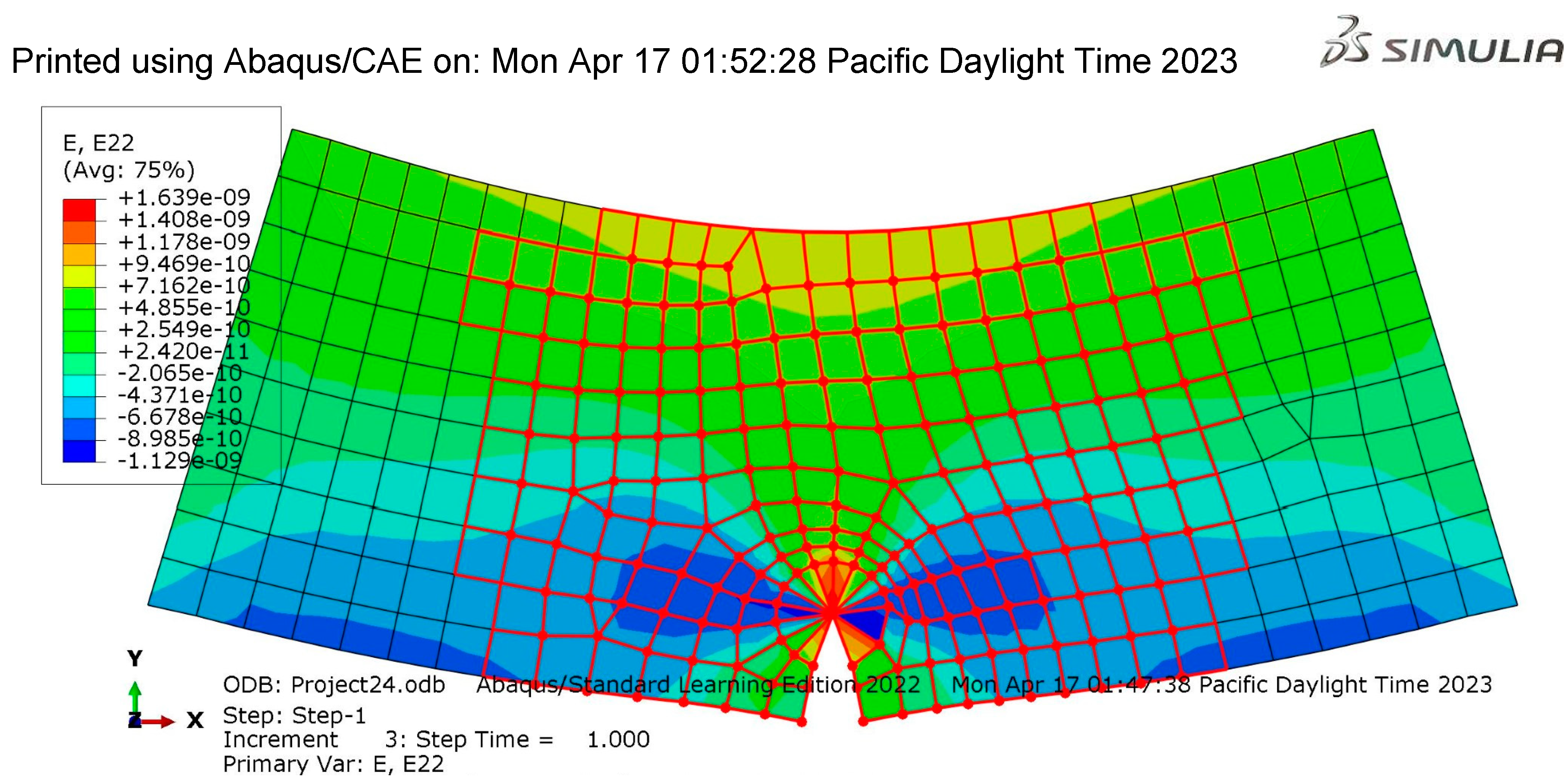
| Parameter | Field Unit | Conventional Hydraulic Fracturing | Rectangular Hydraulic Fracturing |
|---|---|---|---|
| Reservoir permeability, k (Average) | Md | 3.14 | 3.14 |
| Reservoir porosity, ϕ (Average) | % | 8–10 | 8–10 |
| Reservoir initial pressure gradient | psi/ft | 0.27 | 0.27 |
| Bottom hole flowing pressure gradient (during production) | psi/ft | 0.23 | 0.23 |
| The minimum horizontal stress gradient | psi/ft | 0.65 | 0.65 |
| Breakdown pressure gradient | psi/ft | 0.98 | 0.98 |
| Biot poroelastic coefficient | - | 0.95 | 0.95 |
| Poisson ratio | - | 0.15–0.18 | 0.15–0.18 |
| Young’s Modulus | Mpsi | 6–8 | 6–8 |
| Toughness, KIc | MPa m^0.5 | 0.151 | 0.151 |
| Rock Embedment Strength, SRES | MPa | 80–100 | 50–100 |
| Mineralogy | - | Sandstone | Sandstone |
| Formation fluid density, ρf | SG | 0.8017 | 0.8017 |
| Reservoir thickness (net pay), h | M | 58 | 58 |
| Drainage region length in the x-direction, Lx | M | 350 | 350 |
| Drainage region length in the y-direction, Ly | M | 350 | 350 |
| Formation fluid viscosity, μf | cP | 0.278 | 0.278 |
| Formation volume factor, B | m3/m3 | 1.649 | 1.649 |
| Total compressibility, ct | 1/(kg/cm2) | 4.83 × 10−5 | 4.83 × 10−5 |
| Reservoir temperature, TR | °C | 118 | 118 |
| Formation rock density, ρma (Average) | g/cm3 | 2.1–2.5 | 2.1–2.5 |
| Formation-specific heat capacity, CMA | J/g°C | 0.79 | 0.79 |
| Formation thermal conductivity, kma | W/m K | 3.56 | 3.56 |
| Vertical well | M | 3600 | 3600 |
| Wellbore radius, rw | Cm | 15.24 | 15.24 |
| Inner casing radius, r1 | Cm | 11.43 | 11 |
| Parameter | Rectangular Pulse Hydraulic Fracturing | Conventional Hydraulic Fracturing |
|---|---|---|
| Total Fluid Volume (gallons) | 125,000 | 150,000 |
| Average Fracture Length (ft) | 320 | 280 |
| Average Fracture Width (in) | 0.25 | 0.20 |
| Proppant Concentration (lb/ft2) | 2.0 | 1.8 |
| Fracture Network Complexity (score) | 75 | 50 |
| Total Gas Production (MMSCF) | 2,500,000 | 2,200,000 |
| Parameter | Analytical Solution | Rectangular Pulse Hydraulic Fracturing | Conventional Hydraulic Fracturing |
|---|---|---|---|
| Injection Pressure (psi) | 4500 | 4200 | 4800 |
| Fracture Mouth Opening (in) | 0.6 | 0.58 | 0.65 |
| Fracturing Fluid Pressure Distribution | N/A | Uniform | Non-uniform |
| Fracture Aperture (in) | 0.25 | 0.24 | 0.28 |
Disclaimer/Publisher’s Note: The statements, opinions and data contained in all publications are solely those of the individual author(s) and contributor(s) and not of MDPI and/or the editor(s). MDPI and/or the editor(s) disclaim responsibility for any injury to people or property resulting from any ideas, methods, instructions or products referred to in the content. |
© 2023 by the authors. Licensee MDPI, Basel, Switzerland. This article is an open access article distributed under the terms and conditions of the Creative Commons Attribution (CC BY) license (https://creativecommons.org/licenses/by/4.0/).
Share and Cite
Badjadi, M.A.; Zhu, H.; Zhang, C.; Naseem, M.H. Enhancing Water Management in Shale Gas Extraction through Rectangular Pulse Hydraulic Fracturing. Sustainability 2023, 15, 10795. https://doi.org/10.3390/su151410795
Badjadi MA, Zhu H, Zhang C, Naseem MH. Enhancing Water Management in Shale Gas Extraction through Rectangular Pulse Hydraulic Fracturing. Sustainability. 2023; 15(14):10795. https://doi.org/10.3390/su151410795
Chicago/Turabian StyleBadjadi, Mohammed Ali, Hanhua Zhu, Cunquan Zhang, and Muhammad Hamza Naseem. 2023. "Enhancing Water Management in Shale Gas Extraction through Rectangular Pulse Hydraulic Fracturing" Sustainability 15, no. 14: 10795. https://doi.org/10.3390/su151410795
APA StyleBadjadi, M. A., Zhu, H., Zhang, C., & Naseem, M. H. (2023). Enhancing Water Management in Shale Gas Extraction through Rectangular Pulse Hydraulic Fracturing. Sustainability, 15(14), 10795. https://doi.org/10.3390/su151410795






